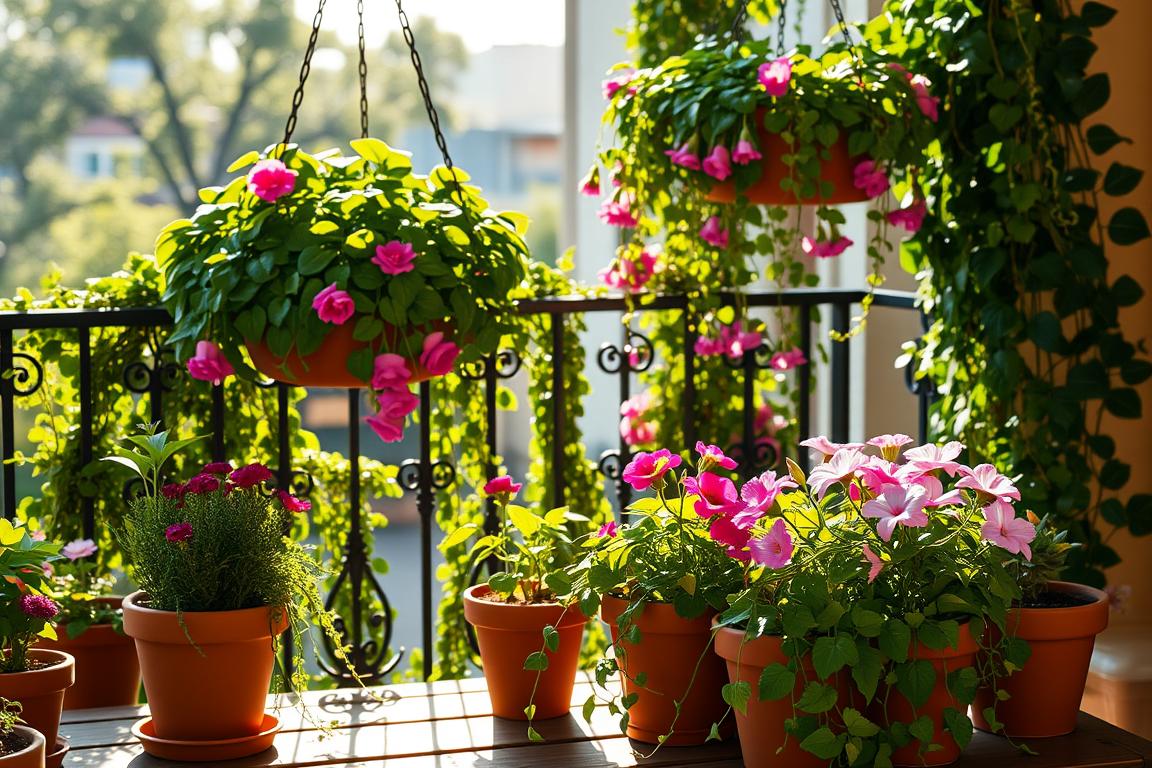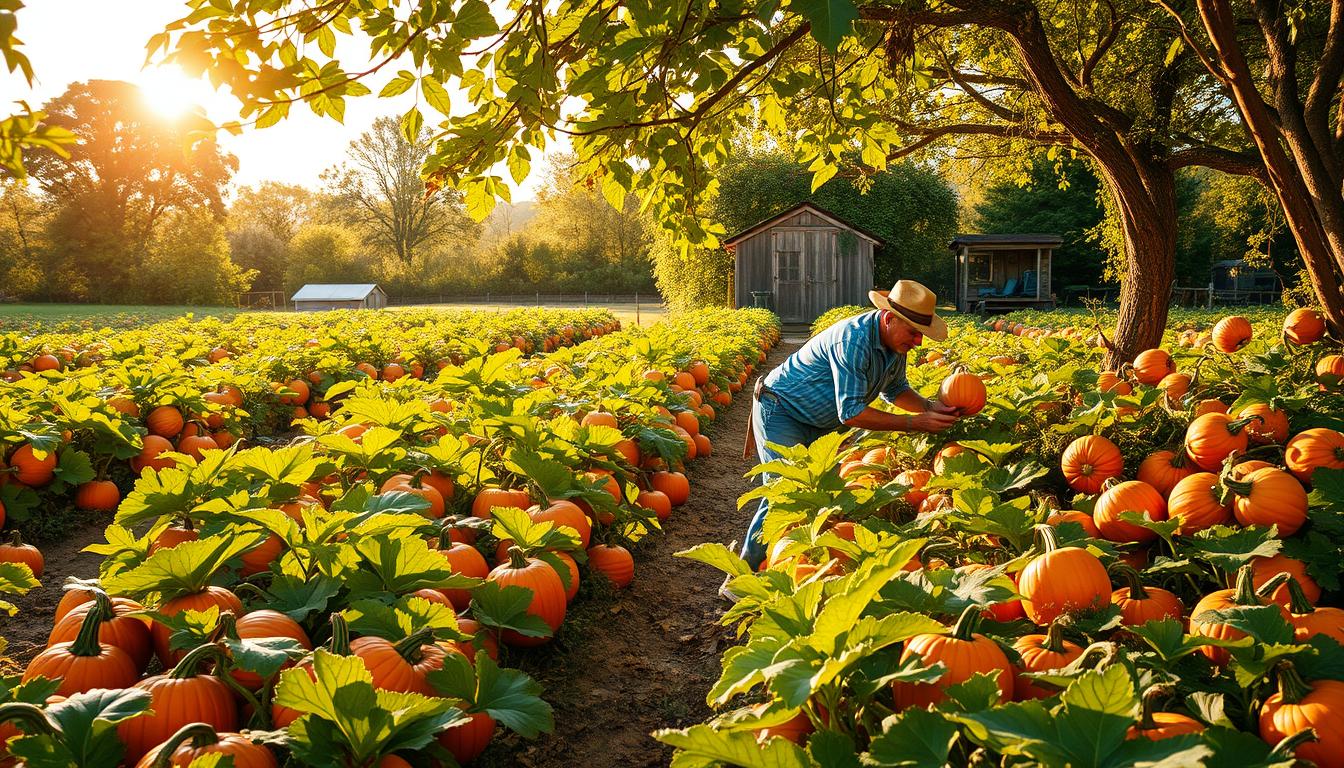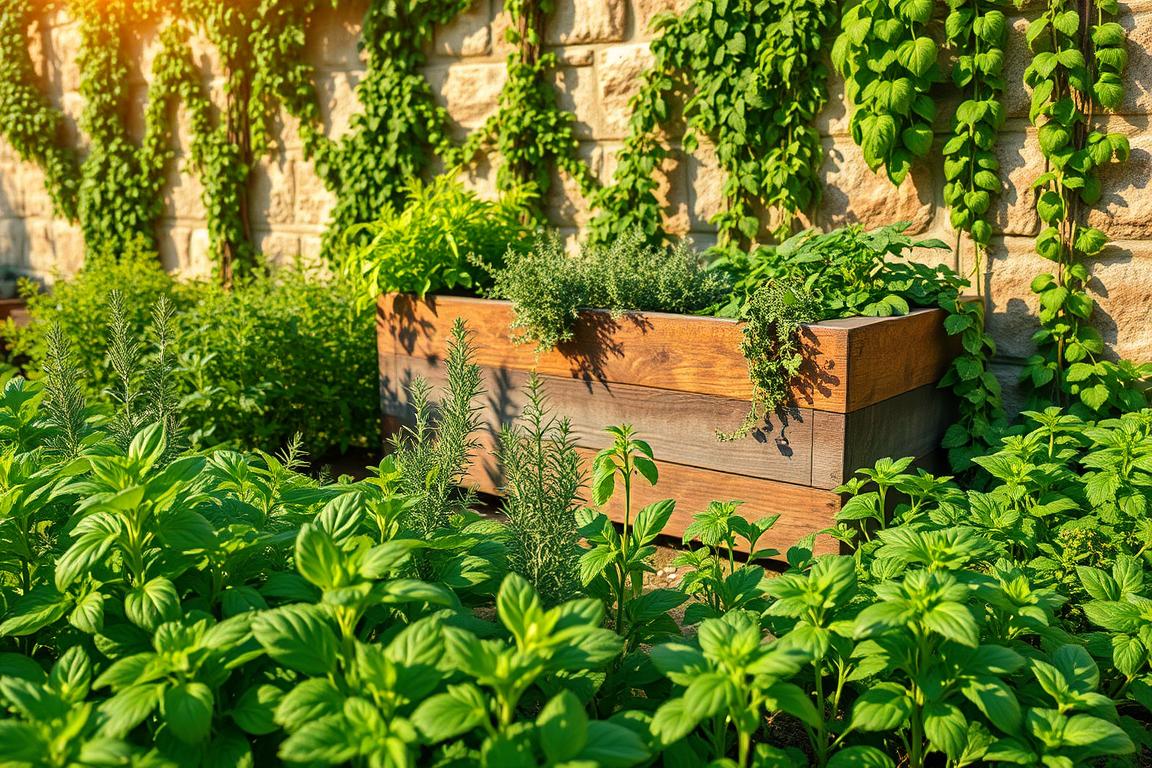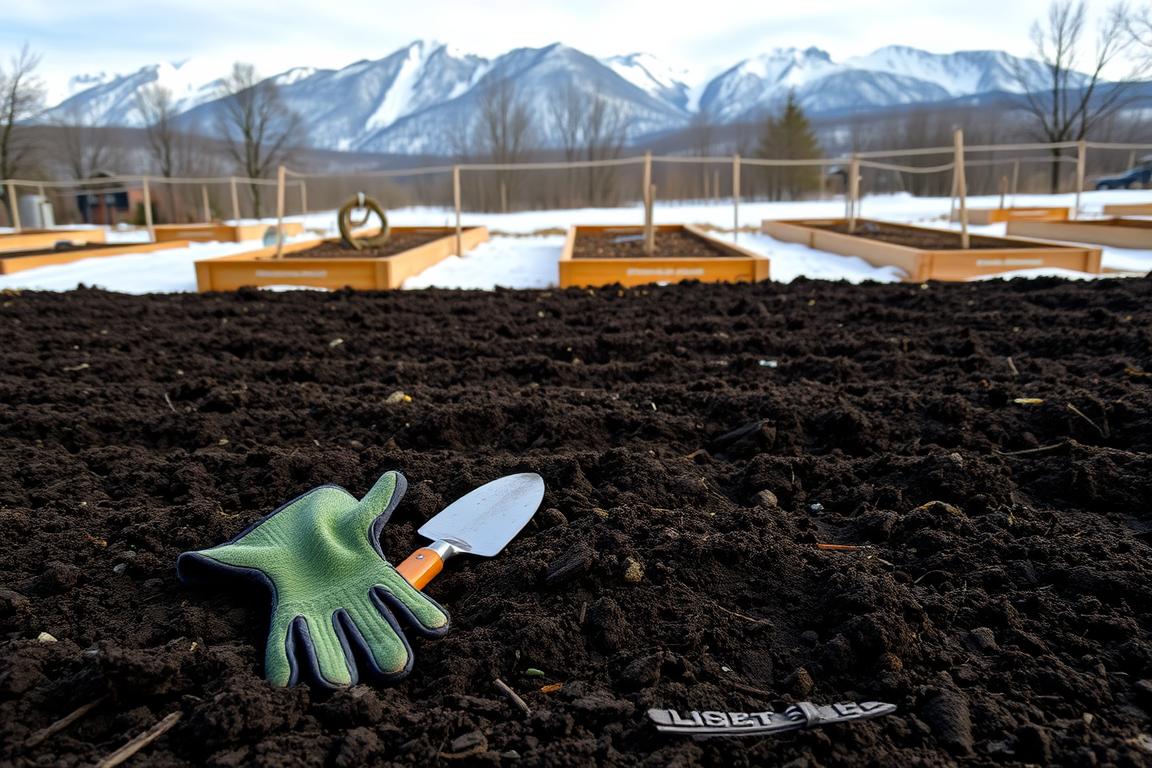Turning your balcony into a lush garden is fun and creative, says Anne Balogh. You can make a vibrant outdoor space in the city’s heart. Just use the right plants and containers.
Container gardening ideas are a great start. With some planning, your balcony can become a peaceful oasis. It’s perfect for relaxing or hosting guests.
Balcony gardening is more than looks. It lets you grow your own herbs and veggies. This boosts your cooking skills.
Key Takeaways
- Maximizing balcony space is crucial for a thriving garden.
- Choosing the right containers and plants is essential.
- Container gardening offers flexibility and creativity.
- Balcony gardens can be both beautiful and functional.
- Growing your own herbs and vegetables is a great bonus.
Planning Your Balcony Container Garden
To make your balcony a lush oasis, start by checking your space and planning your garden. A well-planned balcony garden makes your outdoor space look better. It also helps your plants stay healthy and grow well.
Assessing Your Balcony Space and Conditions
Before picking plants and containers, know your balcony’s conditions. Understand the physical and environmental factors that affect your garden.
Measuring Available Space
First, measure your balcony’s space. Think about its size and layout, and any obstacles like railings or doors. Knowing the exact measurements helps pick the right containers and plan your garden.
Analyzing Sunlight Patterns
Then, look at your balcony’s sunlight patterns. See how much sun it gets during the day. This helps choose the right plants. Some plants need full sun, while others like partial shade.
Understanding Weight Restrictions and Safety Considerations
Also, think about your balcony’s weight limits. Check with your building management or landlord about these limits. Remember, safety is the most important thing to avoid risks.
Determining Your Garden Goals
It’s important to know what you want from your garden. Do you want to grow your own food, or do you prefer a garden for looks?
Edible vs. Ornamental Gardens
Choose between an edible or ornamental garden. Edible gardens let you grow your own food, while ornamental gardens are for looks. Your choice affects the plants and containers you pick.
Year-round vs. Seasonal Planting
Think about whether you want a garden that lasts all year or changes with the seasons. Year-round gardens need plants that do well in different conditions. Seasonal gardens let you change plants with the seasons.
By carefully checking your balcony, understanding weight limits, and setting garden goals, you can create a beautiful balcony garden. Whether you’re new to gardening or experienced, planning is key to a successful balcony garden.
Selecting the Right Containers for Your Balcony Garden
Choosing the right containers is key for a healthy and beautiful balcony garden. The type of container you pick can affect how well your plants grow and how they look. It also impacts drainage and overall appearance.
Types of Containers for Balcony Gardens
There are many types of containers for balcony gardens, each with its own benefits.
Traditional Pots and Planters
Traditional pots and planters are a favorite for balcony gardens. They come in materials like terracotta, ceramic, and plastic. This gives you options for design and function. Terracotta pots are great because they let air in, which helps control soil moisture.
Railing Planters and Hanging Baskets
Railing planters and hanging baskets are perfect for small balconies. They can be hung from the railing or ceiling, adding height to your garden. Hanging baskets are great for plants that trail, like flowers or herbs.
Vertical and Wall-Mounted Systems
For a modern look and to save space, consider vertical or wall-mounted systems. These systems let you grow more plants in less space, creating a green wall effect.
Material Considerations for Different Climates
The material of your container matters, depending on the climate. In hot weather, choose containers that don’t absorb heat, like light-colored plastic or ceramic. This protects the roots. In cooler weather, terracotta containers that keep heat in are better.
Size and Drainage Requirements
The size and drainage of your containers are important for plant health. Make sure your containers have holes for drainage to avoid waterlogged soil. A good rule is to pick containers that are at least 5-7 gallons for most vegetables and herbs.
- Select containers based on the mature size of the plants.
- Ensure proper drainage to prevent root rot.
- Consider the material’s durability and weather resistance.
How to Create a Thriving Balcony Garden with Containers: Plant Selection
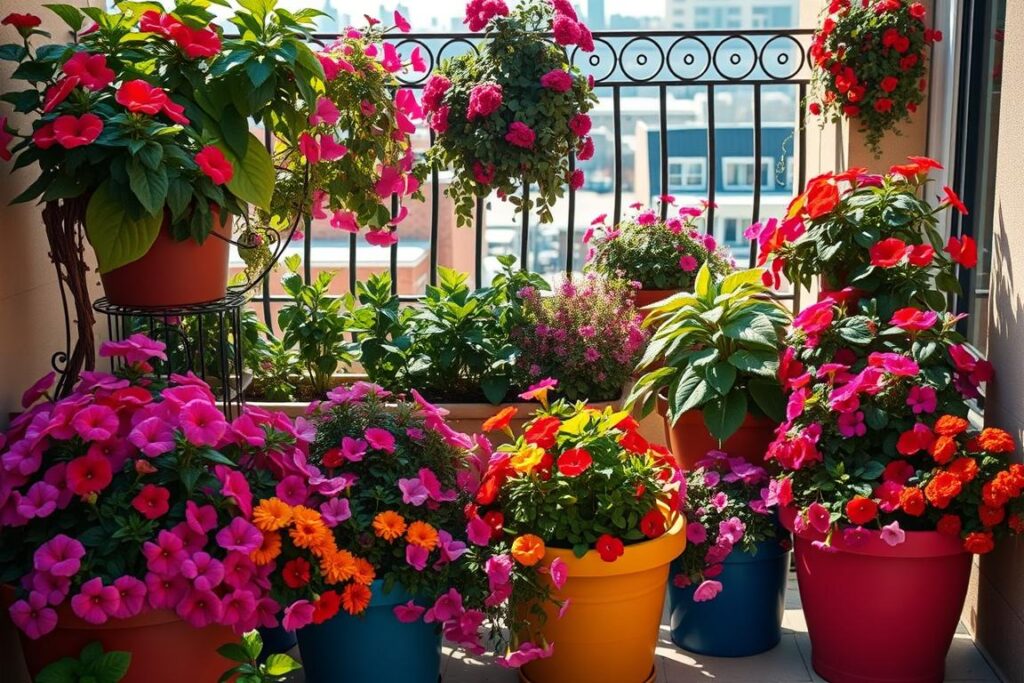
Starting a balcony garden means picking the right plants. The right ones can turn your balcony into a green oasis. You’ll get fresh veggies, herbs, or flowers. It’s all about knowing your balcony’s conditions and picking plants that love them.
Best Vegetables for Container Gardening
Growing veggies on your balcony means fresh food right outside your door. Choose compact varieties made for containers.
Compact Varieties for Small Spaces
For small balconies, go for compact veggies. Here are some:
- Tomatoes: Try ‘Patio’ or ‘Tiny Tim’ for containers.
- Peppers: ‘Thai Hot’ or ‘Bird’s Eye’ are great for tight spots.
- Leafy Greens: Lettuce, kale, and spinach grow well in containers.
High-Yield Options for Maximum Returns
For lots of produce, pick veggies that grow a lot or continuously. Here are some:
| Vegetable | Yield per Plant | Days to Maturity |
|---|---|---|
| Cucumbers | 10-20 | 50-60 |
| Carrots | 20-30 | 60-70 |
| Radishes | 10-20 | 20-30 |
Herbs That Flourish in Balcony Gardens
Herbs add flavor and scent to your balcony garden. Some top picks include:
- Basil: Easy to grow and needs little care.
- Mint: Mint grows well in containers but can spread. It’s easy to keep in check.
- Cilantro: Fast-growing and perfect for containers.
As gardening expert,
“The right herb can elevate your cooking and add a touch of freshness to your balcony garden.”
Flowers and Ornamentals for Color and Texture
Adding flowers and ornamentals makes your balcony garden more beautiful. Try petunias, geraniums, or vines for color and texture.
Considering Sunlight Requirements
Sunlight is key when picking plants. Most veggies and herbs need 6 hours of direct sun. Flowers and ornamentals can handle partial shade. Know your balcony’s sun to pick the best plants.
Soil and Potting Mix Essentials

In urban gardening with containers, soil and potting mix are key. They give plants the nutrients, drainage, and air they need to grow well.
A good potting mix is more than regular soil. It’s a special blend for container plants. It’s lighter and drains better, avoiding waterlogged soil.
Choosing the Right Potting Mix for Containers
Choosing the right potting mix depends on several things. The type of plants and the climate are important. For example, plants that like moist soil need a mix that holds water well. Plants that prefer dry soil need a mix that drains fast.
- Look for a mix that is designed for containers.
- Check the ingredients: peat moss, vermiculite, and perlite help with moisture and drainage.
- Some mixes are made for specific plants, like cacti or orchids.
Creating Custom Soil Blends for Different Plants
Creating your own soil blend can be rewarding. It lets you tailor the mix to your plants’ needs.
For example, a mix for succulents might have more sand or perlite for better drainage. A mix for ferns might have more peat moss to keep moisture in.
Mulching and Soil Maintenance in Containers
Mulching is a simple way to keep container soil healthy. It helps keep moisture in, stops weeds, and controls soil temperature.
Use organic mulches like bark chips or straw. Put a layer on top of your container, but don’t cover the plant’s stem.
Arranging Your Container Garden for Maximum Impact
Turning your balcony into a green oasis is more than picking the right plants. It’s about how you arrange them too. A well-thought-out layout can make your space look amazing and work better.
Vertical Gardening Techniques for Small Spaces
Vertical gardening is a smart way to use space on a small balcony. It saves floor space and looks great too.
Trellises and Support Structures
Trellises are key for plants like peas and cucumbers. They help these plants grow up, making the most of your space.
Stackable Container Systems
Stackable containers are a clever idea for small gardens. They let you stack containers, creating a layered garden that looks and works well.
Creating Visual Interest with Height and Texture
To make your garden interesting, play with height and texture. Mixing plants of different sizes and textures makes your garden lively and eye-catching.
Tips for adding height and texture:
- Use tall plants or trellises to add height.
- Incorporate a mix of plants with different leaf textures.
- Consider adding flowering plants for bursts of color.
Companion Planting in Containers
Companion planting is growing different plants together to help them grow better. In containers, it saves space and makes your garden stronger.
“Companion planting is like a little bit of magic for your garden. It’s an easy way to make your plants healthier and more productive.”
Space-Saving Arrangement Strategies
For small balconies, using space wisely is key. Choose compact plants, arrange containers smartly, and use corners and edges.
With these tips, you can have a beautiful and thriving balcony garden, even with a small space.
Essential Care and Maintenance Tips
Proper care is key to a lush balcony garden all year. Knowing the basics of care and maintenance is crucial.
Watering Strategies for Container Plants
Watering is vital for balcony gardens. Containers dry out quickly, so check moisture often.
Self-Watering Systems for Busy Gardeners
Self-watering systems are great for busy people. They keep plants watered, even when you’re not home.
Dealing with Drainage Issues
Good drainage stops waterlogged soil. Make sure containers have holes to avoid root rot.
Fertilizing Schedule for Optimal Growth
Fertilizing is key for your garden’s health. A balanced fertilizer helps plants grow well.
Recommended Fertilizing Schedule:
| Season | Fertilizer Type | Frequency |
|---|---|---|
| Spring | Balanced Fertilizer | Every 2 weeks |
| Summer | High-Phosphorus Fertilizer | Every 3 weeks |
| Fall | Balanced Fertilizer | Every 4 weeks |
Pest Management in Urban Gardens
Pests can harm urban balcony gardens. Check plants often and use organic pest control.
Seasonal Care Considerations
Different seasons need different care. Knowing these needs helps prepare your garden for each season.
Protecting Plants from Extreme Weather
Extreme weather can harm plants. Use shade cloth or bring plants inside during harsh weather.
Transitioning Between Seasons
Adjust your care as seasons change. This might mean changing fertilizers or protecting against pests.
Conclusion: Enjoying Your Thriving Balcony Garden
Creating a balcony garden is easy with the right planning and care. It can make your apartment living better. By following the tips in this article, you can make a lovely garden that’s a peaceful spot in the city.
Try new things in your balcony garden, like different textures and scents. This makes it more interesting and enjoyable. Learning about balcony gardening can make your outdoor area better.
Having a balcony garden is a great way to improve your apartment. It looks good and makes you feel calm. Follow the advice given to enjoy your garden fully and see the beauty it adds to your life.
FAQ
Q: What are the benefits of balcony gardening?
A: Balcony gardening brings many benefits. It adds green space and improves air quality. It also makes your home look better.
Plus, you can grow your own food and enjoy a calming hobby.
Q: How do I choose the right containers for my balcony garden?
A: When picking containers, think about the material, size, and drainage. Choose ones that last, are weather-resistant, and have holes for water.
Q: What types of plants are suitable for balcony gardens?
A: Many plants do well on balconies, like small veggies, herbs, and flowers. Pick plants that handle wind, sun, and temperature changes. Choose compact or trailing plants to save space.
Q: How often should I water my balcony garden?
A: Watering depends on the plants, container size, and weather. Check the soil often. Water when it’s dry an inch down. Don’t overwater to avoid root rot.
Q: How can I protect my balcony garden from extreme weather?
A: To shield your garden from bad weather, use insulated containers. Move plants under cover in heavy rain or sun. Use shading or windbreaks as needed.
Q: What is the best way to fertilize my balcony garden?
A: Use a balanced, water-soluble fertilizer made for containers. Follow the instructions. Add compost or worm casting for extra nutrients.
Q: How can I maximize space in my balcony garden?
A: To use space well, try vertical gardening with trellises or wall planters. Pick small or trailing plants. Use tiered or stacked planters to save space.
Q: What are some common pests that can affect balcony gardens, and how can I manage them?
A: Aphids, whiteflies, and spider mites are common pests. Use organic methods like neem oil or insecticidal soap. Introduce beneficial insects like ladybugs or lacewings to control pests.
Q: Can I grow vegetables on a shaded balcony?
A: While most veggies need full sun, some can handle shade. Choose shade-tolerant veggies or herbs. Use grow lights to help with light.
Q: How can I create a thriving balcony garden with containers in a small space?
A: To grow a great garden in a small space, pick small containers and plants. Use vertical gardening to save space. Mix plants with different looks and heights for interest.


